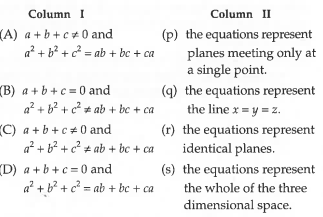In ________ instruments, a vibrating air column produces sound.
winged
string
percussion
None of them
The correct Answer is:a
To solve the question, "In ________ instruments, a vibrating air column produces sound," we need to analyze the types of musical instruments provided in the options: wind, string, percussion, and none of them.
1. Understanding the Question: The question asks for the type of instrument that produces sound through a vibrating air column.
2. Analyzing the Options:
- Wind Instruments: These instruments produce sound when air is blown into them, causing a column of air to vibrate. Examples include flutes, trumpets, and clarinets.
- String Instruments: These instruments produce sound through the vibration of strings, such as violins and guitars. They do not rely on air columns for sound production.
- Percussion Instruments: These instruments produce sound through the striking or shaking of a body, such as drums and tambourines. They also do not involve a vibrating air column.
- None of Them: This option implies that none of the previous categories fit the description.
3. Identifying the Correct Answer: Based on the analysis:
- Wind instruments are the only category that produces sound through a vibrating air column.
4. Final Answer: Therefore, the correct answer is "wind".
- Wind Instruments: These instruments produce sound when air is blown into them, causing a column of air to vibrate. Examples include flutes, trumpets, and clarinets.
- String Instruments: These instruments produce sound through the vibration of strings, such as violins and guitars. They do not rely on air columns for sound production.
- Percussion Instruments: These instruments produce sound through the striking or shaking of a body, such as drums and tambourines. They also do not involve a vibrating air column.
- None of Them: This option implies that none of the previous categories fit the description.
- Wind instruments are the only category that produces sound through a vibrating air column.
Topper's Solved these Questions
- BOOK - PEARSON IIT JEE FOUNDATIONCHAPTER - SOUNDEXERCISE - HOTS-HIGHER ORDER THINKING SKILLS6videos
SOUND
- BOOK - PEARSON IIT JEE FOUNDATIONCHAPTER - SOUNDEXERCISE - CLASSROOM CORNER (A. VERY SHORT ANSWER TYPE QUESTONS - MULTIPLE CHIOCE QUESTIONS)40videos
SOUND
- BOOK - PEARSON IIT JEE FOUNDATIONCHAPTER - SOUNDEXERCISE - Track Your Learning - IV10videos
SOUND
- BOOK - PEARSON IIT JEE FOUNDATIONCHAPTER - MOCK TESTEXERCISE - MULTIPLE CHOICE QUESTIONS25videos
MOCK TEST
- BOOK - PEARSON IIT JEE FOUNDATIONCHAPTER - SOURCES OF ENERGY EXERCISE - Concept Application (Level 2)20videos
SOURCES OF ENERGY
Similar Questions
Knowledge Check
- Question 1 - Select One
Consider the following linear equations ax+by+cz=0,bx+cy+az=0,cx+ay+bz=0.Matchthestatement∈ColumnIwiththe∝erties∈ColumnIIand∈dicateyouranswerbydarken∈gtheap∝riatebu≤s∈the4 xx 4 matrix given in the ORS.
 AOboesBVeenaCMridangamDViolin
AOboesBVeenaCMridangamDViolin - Question 2 - Select One
A sound is produced by plucking a string in a musical instrument, then
AOboesBVeenaCMridangamDViolin - Question 3 - Select One
Loudness of sound is directly proportional to the of ________the amplitude of vibration producing the sound.
AsquareBcubeCinverse squareDinverse cube
In a standing wave pattern in a vibrating air column, nodes are formed at a distance of 4.0 cm. If the speed of sound in air is328ms−1 what is the frequency of the source ?
View SolutionThe separation between a node and the next antinode in a vibrating air column is 25 cm. If the speed of sound in air is 340ms−1, find the frequency of vibration of the air column.
View SolutionThe following diagram shows some instruments. Identify the part which vibrates to produce sound.
 View Solution
View SolutionAnswer true or false
A non-vibrating, body cannot produce sound.View SolutionName the device which is used to produced sound in laboratory experiments.
View Solution

